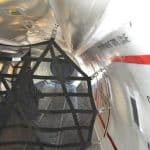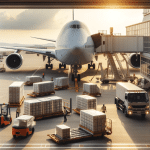
In the complex and dynamic world of air cargo transportation, the carriage of dangerous goods presents a unique set of challenges, particularly for companies like Swiftair Hellas, a prominent player in the Greek air cargo industry. This article delves into the intricacies of transporting hazardous materials, underscoring the regulations, safety measures, and the specific approaches adopted by Swiftair Hellas to ensure safe and compliant operations.
Understanding Dangerous Goods in Air Transport
Dangerous goods, often referred to as hazardous materials, encompass a wide range of substances and items that pose significant risks to health, safety, property, or the environment. These include but are not limited to explosives, gases, flammable liquids, toxic and infectious substances, radioactive materials, corrosives, and miscellaneous dangerous goods like magnetized materials and environmentally hazardous substances.
The International Air Transport Association (IATA) classifies dangerous goods into nine primary classes, each with its own specific handling and transportation requirements. Compliance with these regulations is not just a matter of corporate responsibility but a legal necessity.
Regulatory Framework
The transportation of dangerous goods by air is tightly regulated. Key regulatory bodies include the International Civil Aviation Organization (ICAO) and IATA. The ICAO sets global standards through its Technical Instructions for the Safe Transport of Dangerous Goods by Air, while IATA provides more detailed guidance through the Dangerous Goods Regulations (DGR).
Swiftair Hellas, like other air cargo carriers, must adhere to these regulations rigorously. This includes ensuring that all dangerous goods are properly classified, packed, marked, labeled, and documented according to the current standards.
Swiftair Hellas: Strategies for Safe Transportation
- Specialized Training: Swiftair Hellas invests heavily in specialized training for its staff. This includes training for pilots, cargo handlers, and support staff, ensuring that everyone involved in the transport process is aware of the hazards and knows how to handle them safely.
- Rigorous Acceptance Checks: Before accepting any dangerous goods for transport, Swiftair Hellas conducts thorough checks to ensure compliance with legal and safety requirements. This includes verifying correct packaging, labeling, and documentation.
- Advanced Cargo Handling Equipment: Utilizing state-of-the-art equipment for handling and segregating dangerous goods is pivotal. Swiftair Hellas employs advanced cargo handling systems to minimize the risk of accidents during loading and unloading.
- Emergency Response Preparedness: In the event of an incident, swift and effective response is crucial. Swiftair Hellas maintains a robust emergency response plan, regularly updated and tested through drills and simulations.
- Collaboration with Authorities: Ongoing collaboration with aviation authorities and regulatory bodies ensures that Swiftair Hellas stays abreast of regulatory changes and industry best practices.
Challenges and Mitigation Strategies
Transporting dangerous goods by air is fraught with challenges. Weather conditions, technical issues, human error, and regulatory changes can all impact operations. Swiftair Hellas mitigates these risks through continuous monitoring, real-time communication systems, and maintaining flexibility in operations to adapt to unforeseen circumstances.
The transportation of dangerous goods by air is a critical yet challenging aspect of the aviation industry. Swiftair Hellas, through its commitment to safety, regulatory compliance, and continuous improvement, exemplifies how an air cargo carrier can successfully navigate these challenges. As regulations evolve and technology advances, Swiftair Hellas’s proactive approach positions it well to continue leading in the safe and efficient transportation of hazardous materials in the skies above Greece and beyond.





